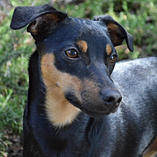Enter the E. & J. Gallo corporation, to the rescue. Their new spirit and wine combination, Viniq, is hailed as "America’s first premium shimmery liqueur." That heading portends a tidal wave of imitators, so try to remember who had the seismic size to start that shimmering tsunami. It was Gallo.
"Viniq is the first of its kind liqueur," reads the press release, "created to offer on-trend Millennial consumers a new spirit with a unique look. Just shake the bottle and watch it shimmer."
This shimmering concoction, the blurb continues, is a "fusion of premium vodka, Moscato, and natural fruit flavors that tastes great and looks glamorous," again commenting on the appearance of the drink. "The unique shimmer in Viniq is the same ingredient that gives frosting its shine on your favorite cake or the sparkle in rock candy and is safe to consume." Safe to consume? Well, that's a relief, if not a very high recommendation.
The marketing approach is so fixated upon the "shimmer" in the drink that it appears as a red flag concerning the taste. Don't think about the flavor - just look at that beautiful shimmer that "grabs attention from across a room. Just what you need to shimmer into the weekend!" The label directions include “shake to shimmer” and “shake well before serving,” so you get the idea that they really want you to make the drink shimmer. The label goes on: “Captivate your friends with the drink that shimmers when you shake it. Refreshingly delicious and smooth with the shimmering appearance that dazzles.” So, dazzle me, already. Shake and shimmer. They sent a sample to me, so here goes.
Viniq blends vodka and Moscato wine to a 20% abv level, or 40 proof. It sells for around $20 per 750 ml bottle. The sample I tried is purple - there is a Ruby version - and the drink smells and tastes boozy and grapey. It reminds me of the drinks we made in college, where taste was less important than the alcoholic effect produced in return for the money invested. I sampled the beverage with and without the shimmery stuff - pouring "clean" juice when the shimmer was settled in the bottom of the bottle - and the shimmery drink did have a high, sweet note in it that I did not find pleasant. Without the shimmer, it was like vodka and grape Kool-Aid.
Speaking of cocktails, Viniq may well serve better as a mixer than a solo drink. I saw some online comments from users which were very favorable. I wish I could be so generous but I am not a Viniq fan. I don't like putting things in wine that aren't there naturally. It is one reason I don't drink Port very much. To me, it often tastes like wine with a shot in it. If I want a Moscato, I would rather have a Moscato without the vodka. I would certainly rather have the Moscato without the shimmer.
Looking online, I find that people actually seem to like Viniq quite a bit. There were only a few negative remarks among a dozen or so raves. The bashers didn’t like the flavor, while the supporters seemed to really get a kick from the drink’s appearance: "It was very chilled and I love it!!!" "My new favorite drink." "OMG Delish!" "Beautiful bottle. Amazing!"
While online, I note that Viniq is available - among other places - at my local Ralph’s supermarket. There, I can also buy vodka, wine, grape soda and cake frosting - in case I want to try my own hand at making a shimmering liqueur.
The publicity sheet I received also contained some recipe ideas for Viniq. Two of them involve Champagne. If I were you, I'd substitute a cheaper sparkle to go along with that shimmer.
The A-List:
3 parts. Viniq®
2 parts champagne
Orange Wheel
Pour all into an ice-filled elegant glass, garnish with an orange wheel.
The Shimmer-tini:
2 parts Viniq®
2 parts cranberry juice
1 part New Amsterdam® Peach Vodka
2 dashes of bitters
Mint sprig, lime wedge, berries
Pour all into a tall glass, stir thoroughly, add ice, stir again and garnish with a mint sprig, a lime wedge and berries.
The Payday:
3 parts Viniq®
1 part lemonade (1/2 lemon juice/half simple syrup)
½ part premium orange liqueur
2 parts champagne
Mint sprig
Pour all into a shaker, stir thoroughly, strain, garnish with a mint sprig and enjoy.
Follow Randy Fuller on Twitter



